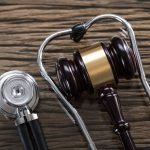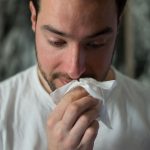Chronic Autoimmune Neutropenia: Case Study of a 4-Year-Old Female
Tolle Totum
ELISABETH BASTOS, BSC, ND, RACU
Neutrophils are known for their important role in fighting extracellular bacteria and fungal infections.1 They are involved in innate immunity via their recruitment and activation of macrophages (MACs) and the generation of oxidative factors, and they help to resolve inflammation. In so doing, they are very flexible in their response to changes in the cellular environment. Neutropenia places one at risk of sepsis and extracellular infection. Common treatments for infection include antibiotics, many of which have been found to interfere with neutrophil function.2,3
This article is a case study of E.G., a 4-year-old girl who presented to my office in November 2018 with a diagnosis of autoimmune neutropenia (AIN). This discussion will explore concepts of supporting chronic neutropenic patients in a manner applicable to an autoimmune background, ie, by focusing on reducing PAMPs (pathogen-associated molecular pattern molecules)/pathogenic load, and DAMPs (damage-associated molecular pattern molecules), stimulating the innate immune system, and raising endogenous anti-inflammatory potential. It will also acknowledge the positive roles of inflammation and oxidation in the immune system when in proper balance.4-8
The Patient
Past Medical History & Testing
E.G.’s mother reported that since 19 months of age, E.G. had often been sick despite breastfeeding and vaccinations.
At age 2, E.G. was hospitalized for a severe fungal mastoiditis. She was found to have neutropenia, with a neutrophil count of 0.41 x 109/L (or 11%). Severe neutropenia is defined as less than 0.5 x109/L (or <55%).3 According to the specialist involved in her care, the mastoiditis was likely an artifact of the neutropenia, not the cause. A bone marrow aspiration and biopsy was reported as normal. She was started on granulocyte colony-stimulating factor (G-CSF) (filgrastim), which she remained on for 2 years but without a maintained rise in neutrophil levels. Curiously, periodic increases in her neutrophils did occur when she was in a febrile, inflamed state, and they also rose to near normal after the fourth stage of our treatment plan. This put into question her true diagnosis and encouraged me to stay evidence-based while still novel in my approach to her AIN.
Her mother reported that during the fungal mastoiditis, which continued between 2 and 4 years of age, E.G. experienced fevers approximately every 3 weeks that would result in hospitalizations, chest X-rays, and antibiotics. Yet there were never any apparent diagnosed foci of infection.
Family history and genetic testing for congenital neutropenia were both negative.
Her mother reported that E.G. had been experiencing vaginal and anal itching. A visual exam of the perineal and anal area revealed red, irritated tissues and cirum-anal streaks of stool-like material and ivory flecks, despite reportedly good hygiene in the home.
Signs & Symptoms
During E.G.’s initial office consultation in November 2018, I found the following signs and symptoms particularly noteworthy:
- Daily abdominal distension, poor appetite, and on physical exam a tender, distended abdomen
- Ear pain despite an otherwise normal otoscopy exam
- Lethargy, which often caused the child to lie down in the daytime, outside of usual sleep times
- Sudden, untriggered screaming that occurred most mornings of the week
- Loss of consciousness or “blanking-out” seizure-like events occurring with each febrile episode (every 3 weeks). An epilepsy investigation was aborted, as the child had experienced no further events after our treatment had commenced.
- Possible pathogenic yeast/fungal and bacterial imbalance, as suggested by dark-field live-blood-cell analysis
Table 1 lists 5 sets of laboratory results, the last 2 of which followed the start of naturopathic treatment. CBCs from 2018 indicated the presence of atypical lymphocytes, which is common in viral infections. (See Table 2 for optimal WBC percentages.) Viral infections can further suppress neutrophils. Testing in March 2018 revealed iron deficiency anemia, as indicated by abnormally low ferritin, reticulocytes, hemoglobin, and MCV. Bone marrow biopsy was reported as normal by E.G.’s mother, although I never had access to this report for confirmation.
The CBC also showed some basophils present, though no elevated eosinophils, which made me suspect a parasite as part of a PAMP issue for her. Due to the profound effect of intestinal microbes on the immune system,6,9 comprehensive stool testing was ordered in March 2019. The microscopic exam of the Day-3 sample confirmed the presence of Dientamoeba fragilis (Table 1).
DAMPs related to incompatible foods10 can trigger interleukin (IL)-17 within 4-8 hrs.4-7,11 IL-17 then normally triggers TNFα and an influx of neutrophils to resolve the inflammation and damage. However, resolution may not happen effectively in patients with neutropenia (which makes inflammation avoidance a topic of interest).8,9 In this case, food intolerances were identified via the Carroll Food Intolerance Method®.
Impressions
The diagnosis of primary autoimmune neutropenia was assumed, with her pediatric allopathic care team seeing no need for neutrophil autoimmune marker investigation of genetic causes; ie, chronic idiopathic neutropenia (CIN) was ruled out, and the same treatment principles would apply in either case. Moreover, testing outcomes are conventionally documented to have no bearing on treatment.12,13 Since E.G. had this condition for over 2 years by the time she first consulted me, and benign AIN typically resolves within that amount of time,13 I considered the possibility of a potential lingering fungal or viral infection being involved in her illness.
When working properly, the immune system maintains a balance between preventing infection (adequate WBC and cytokine response) and preventing the development of ongoing inflammation after an infection has resolved (resolution of excessive WBC/cytokine activity). Chronic inflammation, which can also be triggered by chronic infection, can also leave one prone to increased risk of reinfection.14
I was pleased to see a C-reactive protein (CRP)-induced neutrophil influx during febrile periods, indicating a closer than expected immune ramp-up for infection protection, as shown in the 2 charted 2018 CBC values.7,14-16 I was also relieved to see no eosinophil elevation that would imply Th2 dominance,5,16,17 although it would be important to recheck this in the future, as Th2 dominance would place her at higher risk for the immune-presenting self-antigen.
Table 1. Laboratory Results
| March 2018 (Febrile state) | April 2018 | Sept 2018 (Febrile state) | Nov 2019 (ND) | Dec 2019 (ND) | |
| Reticulocytes | 27.1 x 109/L (L) | ||||
| Immature reticulocyte fraction | 4.4% (L) | ||||
| CRP (mg/L) | 27.5 mg/L (H) | 9.3 mg/L (H) | WNL (hs-CRP) | ||
| Free T4 | 11.0 pmol/L (L) | 12 pmol/L | |||
| Free T3 | 5.6 pmol/L | ||||
| TSH | 0.71 mU/L (L) | 2.81 mU/L (WNL) | |||
| TPO antibody | WNL | ||||
| TG antibody | WNL | ||||
| Atypical lymphocytes; anisocytosis | Present | ||||
| Platelet morphology | WNL | WNL | |||
| Na/K ratio | 36 (H) | ||||
| B12 | 358 pg/mL (WNL) | ||||
| Ferritin | 15 µg/mL (L) | ||||
| Hemoglobin | 110 g/L (L) | ||||
| Hematocrit | 0.34 L/L (L) | ||||
| MCV | 78 fL (WNL) | ||||
| RBC | 4.37 x 1012/L (L) | ||||
| RDW | 14.5% (WNL) | 14.5% (WNL) | |||
| Prothrombin & INR | WNL | ||||
| ALT | 27 IU/L (WNL) | ||||
| Neutrophils | 48% (L) | 11% (L) | 45% (L) | 9% (L) | 51% |
| Monocytes | 15% | 16% | 35% (H) | 15% | |
| Lymphocytes | 70% | 48% | 73% (H) | ||
| WBCs | 3.57 x 109/L | ||||
| NRBCs | 0 | 0 | 0 | 0 | |
| Basophils | 2% (H) | 0% | 2% (H) | ||
| Eosinophils | 2% (WNL) | 1.6% (WNL) | 2% (WNL) | ||
| IgA, total | 2.19 g/L (H) | ||||
| IgG, total | 10.58 g/L (WNL) |
(WNL = within normal limits; L = low; H = high; ND = labs after starting naturopathic care; CRP = C-reactive protein; TSH = thyroid-stimulating hormone; TPO = thyroid peroxidase; TG = thyroglobulin; GFR = glomerular filtration rate; RDW = RBC distribution width; ALT = alanine aminotransferase; NRBC = nucleated RBCs)
Table 2. Optimal WBC Counts
| Neutrophils | 55-66%; and to avoid sepsis risk, over 1000 cells/µL |
| Eosinophils | 2-3% maximum (ideally less than zero) |
| Basophils | 0-2%, maximum (ideally zero) |
| Monocytes | 5-11% |
| Lymphocytes | 20-45% |
Plan
E.G. had a total of 4 appointments with me between November 2018 and November 2019. Table 3 outlines my treatment recommendations during that period of time.
E.G. experienced seizures with each febrile episode, reminding us of how NF-ĸB can, within hours, trigger seizure-like behavior.18 Because of this, as well as E.G.’s age, the chronicity of her fevers, and the elevated CRP values, I opted to add in some anti-inflammatory support only as needed, and otherwise planned to use endogenous glucocorticoid production support for inflammation resolution (see Table 3). At the same time, I cautioned E.G.’s mother against overuse of antioxidants and anti-inflammatory agents, as they can impair the immune system’s ability to ramp up and fight infection.19
Based on the low TSH from her March 2018 testing, gentle thyroid support was provided. Thyroid hormones impact innate and cellular immunity, including MACs, which makes the gland an important focus.19 Testing in November 2019 was negative for both TPO and TG antibodies.
During the course of treatment, I added nutraceuticals to directly support MAC phagocytosis.20 There are different types of MACs, with some depending on oxidation (M2 polarization types),21 some on glucose metabolism (M1 polarization types), and some on the Krebs cycle.22 Consequently, it was important to support all of these areas, including ensuring frequent meals, avoiding high-glycemic-load foods, adding zinc, and citric acid homeopathic dilutions. The plan included avoidance of excessive and potent antioxidants and direct anti-inflammatories that could hinder her innate immune MACs.1 I advised the mother against the common use in her family of essential oils and of berry juices or powders, including concentrates with strong antioxidant properties.23
Instead, we moved ahead with low-dose Ribes nigrum bud tincture to boost corticotropic activity. Inadequate cortisol production is common in chronic inflammatory conditions, especially when fatigue is a significant issue.24,25
Vitamin D and thymus support were added to assist the T-regulatory (Treg) system (suppressors of inflammation and immune overactivity; peripheral tolerance). The thymus can also produce IL-17 that can trigger neutrophil influx.4
I suspected pinworms, since coinfection with Dientamoeba fragilis is common. However, because there is no reliable test for pinworms, I advised the mother to seek an over-the-counter vermifuge to use in combination with our herbal antiparasitics.
I didn’t want to ignore the precipitating event of fungal mastoiditis, especially since dark-field microscopy suggested pathogenic yeast/fungus risk; the child’s mother also stated that E.G.’s first home had a musty smell to it, raising suspicion of mold infestation and exposure. The parasite herbal treatment that we started after stool testing had some mild antifungal activity. Starting in November 2019, when there was less risk of Herxheimer reactions, we moved to deeper-acting antifungal agents (Table 3).
Table 3. Treatment Plan
| Treatment | Purpose |
| Citric acid dilutions (10X, 30X, 200X, equal amounts) (10 drops/d) | Support macrophages through support of Krebs cycle |
| Thymus dilutions (8X, 30X, 100X) | Support neutrophil influx and Treg production; thymus can also produce IL-17 that can stimulate neutrophil influx26 |
| Sus scrofa homeopathic (8X, 30X, 100X) | Support neutrophil influx and Treg production |
| Liposomal glutathione (providing 250 mg glutathione) paired with heme iron (7 mg) | Assist repair and prevent Fenton reaction; improve O2 circulation to help control inflammation27 |
| Lomatium dissectum tincture, 1:5 50% (6 drops/d X 2 wk, then 3 drops/d ongoing, mixed in water) | Antiviral |
| Ribes nigrum bud extract [1:200, 6.25 mg dried equivalent] (1.25 mL every morning, ideally at 3 AM) | Control endogenous inflammation via glucocorticoid regulation28 |
| Vitamin D (1000 IU/d) | Improve Treg function |
| Anti-parasite formula containing Hydrastis canadensis, 150 mg; berberine sulphate, 100 mg; citrus bioflavonoid, 83 mg; Juglans nigra, 50 mg; Arctium lappa, 30 mg; and Olea europaea, 30 mg | Treat D fragilis infection; support Th1 |
| Thyroid support, including potassium iodide, 50 µg; selenomethionine, 50 µg; diiodotyrosine, 100 µg; Laminaria digitata, 125 mg; Iris versicolor, 82 mg; Commiphora myrrha, 30 mg; Urtica dioica, 25 mg; Withania somnifera, 25 mg; Phyllanthus emblica, 6.5 mg; Terminalia bellirica, 6.5 mg; Terminalia chebula, 6.5 mg; and Zingiber officinale, 5 mg | Support innate and cellular immunity via support of thyroid function |
| Eliminate incompatible foods | Reduce DAMPs |
| Phytosomal curcuminoid-phosphatidylcholine complex (as needed) | Reduce STAT3 that drives NF-ĸB inflammation |
| Formula containing liposomal Boswellia serrata [5:1 QCE stem bark oleogum resin*] and lecithin [glycine max / seed] (as needed) | Control inflammation29 |
| After November 2019 consult: | |
| Herbal formula containing reishi/cultured mycelia extract, 100 mg; fruiting body [4:1], 100 mg [400 mg dried equivalent]; Andrographis leaf extract [13-15:1], 200 mg [2600-3000 mg dried equivalent]; Astragalus root [16:1], 240 mg [3840 mg dried equivalent] (1 capsule/d) | Support IgA, natural killer cells, and cell-mediated immunity; balance cytokines |
| Dilutions of Candida albicans 5X and Candida parapsilosis 5X, in a base of purified water (1 drop/d of each) | Reduce PAMPs, treat Candida/fungus |
| Zinc citrate, 15 mg (1/d x 2 mo) | Support macrophages through support of Krebs cycle |
(QCE = crude quantity extract)
*5 parts crude Boswellia from stem bark oleogum resin = 1 part Boswellia extract in active ingredient form found within the capsule
Follow-up
Over the course of 4 consultations, there was steady and consistent progression toward long-term stabilization. As of the fourth consult, in November 2019, E.G. had used antibiotics only once within 12 months and had required no hospitalizations. This sweet child reportedly had experienced no unusual behavioral outbursts or seizure-like behaviors for 12 months. Her stomach aches and distension had improved by 95%, and she no longer had to lie down during the day due to fatigue. Following treatment for the parasite, she also had no more anal/genital irritation.
With her current stabilization, her new allopathic plan was to take antibiotics only when diagnosed with a severe infection. This was promising, as many antibiotics have been shown to suppress neutrophil function – certainly counterproductive in her case. Prior to working with me, she had been taking antibiotics every 3 weeks.3,19,30
The November 2019 tests (Table 1) showed a slightly high percentage of monocytes, as well as elevated total IgA. These were welcome signs, since they suggested greater mucosal surveillance ability.15 On the other hand, despite the clinical improvement, her neutrophil count was still low.
From the start, I suspected that a chronic virus might be contributing to the neutropenia. As there is still limited naturopathic access to specific virus testing in Ontario, I finally decided after the November 2019 consult to proceed with a therapeutic trial of low-dose, longer-term antiviral support using the safe herbal, Lomatium dissectum. E.G. tolerated it well.
In December 2019, E.G.’s mother contacted me with good news. E.G. had recently had an acute sinus infection that led to a CBC (report not received prior to this publication) that showed a neutrophil count of 1300 cells/µL – a level that put her above the risk for systemic serious infection16 and which her general practitioner had not reported seeing before.
Future Considerations
At the time of this writing, my most recent communication with E.G.’s mother was in December 2019. E.G. was doing well, but we planned to continue treatment and monitoring, with special attention toward the following areas:
- Regularly obtain CBCs and CRP measurements (perhaps as frequently as every 3-6 weeks) to monitor inflammation and oxidation balance that allows for infection-fighting ability but without the risk of tissue damage
- Repeat thyroid evaluations, including autoimmune markers
- Monitor for Th2 dominance (checks for elevations of eosinophils and/or basophils)
- Cellular and humoral testing for Lyme disease, as the presence of basophils was not explained by Th2 dominance and could therefore represent a chronic basophil-attracting infection31,32
- Monitor AM blood cortisol within 3 hours of waking24
- Reduce PAMPs, including acute and chronic pathogenic burden, using a rotation (to avoid resistance) of exogenous substances as long as she is neutropenic
- Low-dose replenishment of gut flora as indicated
- Promote macrophage phagocytosis
Conclusion
Autoimmune neutropenia is not curable per se, as memory cells are self-propagating. However, we certainly have the evidence and naturopathic tools to facilitate autoimmune dormancy and improve quality of life without simply suppressing the immune system or giving potentially counterproductive antimicrobials that can also instigate serious pathogenic resistance. In this case, supporting and augmenting E.G.’s innate immune system and controlling endogenous inflammation, along with reducing DAMPs and PAMPs, has thus far been an effective strategy.
References:
- Selders GS, Fetz AE, Radic MZ, Bowlin GL. An overview of the role of neutrophils in innate immunity, inflammation and host-biomaterial integration. Regen Biomater. 2017;4(1):55-68.
- Zimmermann P, Ziesenitz VC, Curtis N, Ritz N. The Immunomodulatory Effects of Macrolides—A Systematic Review of the Underlying Mechanisms. Front Immunol. 2018;9:302.
- Munshi HG, Montgomery RB. Severe neutropenia a diagnostic approach. West J Med. 2000;172(4):248-252.
- Omenetti S, Pizarro TT. The Treg/Th17 Axis: A Dynamic Balance Regulated by the Gut Microbiome. Front Immunol. 2015;6:639.
- Iwakura Y, Ishigame H, Salijo S, Nakae S. Functional Specialization of Interleukin-17 Family Members. Immunity. 2011;34(2):149-162.
- Park H, Li Z, Yang XO, et al. A distinct lineage of CD4 T cells regulates tissue inflammation by producing interleukin 17. Nat Immunol. 2005; 6(11):1133-1141.
- Cua DJ, Tato CM. Innate IL-17-producing cells: the sentinels of the immune system. Nat Rev Immunol. 2010;10(7):479-489.
- Beringer A, Noack M, Miossec P. IL-17 in Chronic Inflammation: From Discovery to Targeting. Trends Mol Med. 2016;22(3):230-241.
- Yasuda K, Takeuchi Y, Hirota K. The pathogenicity of Th17 cells in autoimmune diseases. Semin Immunopathol. 2019;41(3):283-297.
- Pietschmann N. Food Intolerance: Immune Activation Through Diet-associated Stimuli in Chronic Disease. Altern Ther Health Med. 2015;21(4):42-52.
- Yang XO, Pappu BP, Nurieva R, et al. T helper 17 lineage differentiation is programmed by orphan nuclear receptors ROR alpha and ROR gamma. Immunity. 2008;28(1):29-39.
- Bruin M, Dassen A, Pajkrt D, et al. Primary autoimmune neutropenia in children: a study of neutrophil antibodies and clinical course. Vox Sang. 2005;88(1):52-59.
- Dale DC, Bolyard AA. An update on the diagnosis and treatment of chronic idiopathic neutropenia. Curr Opin Hematol. 2017;24(1):46-53.
- Klinker MW, Lundy SK. Multiple Mechanisms of Immune Suppression by B Lymphocytes. Mol Med. 2012;18:123-127.
- Miossec P, Korn T, Kuchroo VK. Interleukin-17 and type 17 helper T cells. N Engl J Med. 2009;361(9):888-898.
- Walker HK, Hall WD. The White Blood Cell and Differential Count. In: Clinical Methods: The History, Physical, and Laboratory Examinations. 3rd ed. Boston, MA: Butterworth-Heinemann; 1990.
- Maddur MS, Vani J, Hedge P, et al. Inhibition of differentiation, amplification, and function of human TH17 cells by intravenous immunoglobulin. J Allergy Clin Immunol. 2011;127(3):823-830.
- Barker-Haliski ML, Löscher W, White HS, Galanopoulou AS. Neuroinflammation in epileptogenesis: insights and translational perspectives from new models of epilepsies. Epilepsia. 2017;58 Suppl 3:39-47.
- Montesinos MM, Pellizas CG. Thyroid Hormone Action on Innate Immunity. Front Endocrinol. 2019;10:350.
- Ryan DG, O’Neill LAJ. Krebs cycle rewired for macrophage and dendritic cell effector functions. Febs Letters. 2017;591(19):2992-3006.
- Knight JA. Review: Free radicals, antioxidants, and the immune system. Ann Clin Lab Sci. 2000;30(2):145-158.
- Hard GC. Some biochemical aspects of the immune macrophage. Br J Exp Pathol. 1970;51(1):97-105.
- Carlsen MH, Halvorsen BL, Holte K, et al. The total antioxidant content of more than 3100 foods, beverages, spices, herbs and supplements used worldwide. Nutr J. 2010;9:3.
- Cutolo M. Chronobiology and the treatment of rheumatoid arthritis. Curr Opin Rheumatol. 2012;24(3):312-318.
- Wright HL, Moots RJ, Bucknall RC, Edwards SW. Neutrophil function in inflammation and inflammatory diseases. Rheumatology (Oxford). 2010;49(9):1618-1631.
- Di Liberto D, Scazzone C, La Rocca G, et al. Vitamin D increases the production of IL-10 by regulatory T cells in patients with systemic sclerosis. Clin Exp Rheumatol. 2019;37 Suppl 119(4):76-81.
- Winterbourn CC. Toxicity of iron and hydrogen peroxide: the Fenton reaction. Toxicol Lett. 1995;82-83:969-974.
- Straub RH, Cutolo M. Glucocorticoids and chronic inflammation. Rheumatology (Oxford). 2016;55(Suppl 2):ii6–ii14.
- Kunnumakkara AB, Nair AS, Sung B, et al. Boswellic acid blocks Signal transducers and activators of transcription 3 signaling, proliferation, and survival of multiple myeloma via the protein tyrosine phosphatase SHP-1. Mol Cancer Res. 2009;7(1):118-128.
- Samsel A, Seneff S. Glyphosate’s Suppression of Cytochrome P450 Enzymes and Amino Acid Biosynthesis by the Gut Microbiome: Pathways to Modern Diseases. Entropy. 2013;15:1416-1463.
- Siracusa MC, Kim BS, Spergel JM, Artis D. Basophils and allergic inflammation. J Allergy Clin Immunol. 2013;132(4):789-801.
- Benach JL, Gruber BL, Coleman JL, et al. An IgE response to spirochete antigen in patients with Lyme disease. Zentralbl Bakteriol Mikrobiol Hyg A. 1986;263(1-2):127-132.

Elisabeth Bastos, BSc, ND, RAcu, holds a baccalaureate in Science from the Guelph University BioMed program. Dr Bastos graduated from CCNM (Toronto, Canada), obtaining her ND license in 2005; she also holds a license as a TCM acupuncturist. She is clinic founder of The Bastos Natural Family Center, where she practices full-time using functional, Chinese, and biological medicine principles. She is a wife, mother, professional speaker, and author. Dr Bastos has contributed to the magazine Chatelaine, has appeared on the online show Experts Live, and has been awarded the title of “Best Practitioner” yearly since 2008 through local Readers Choice programs. Facebook: https://www.facebook.com/PuslinchNaturopath/









